14+ Sample Warehouse Risk Assessment
-
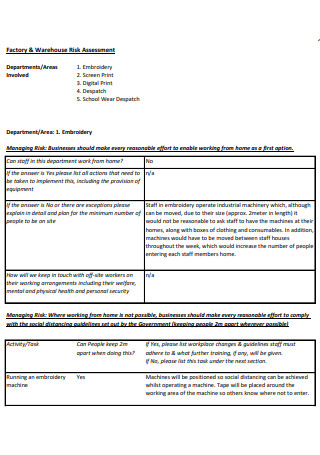
Factory and Warehouse Risk Assessment
download now -
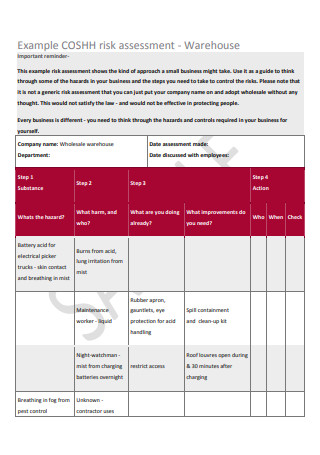
Warehouse Risk Assessment Example
download now -
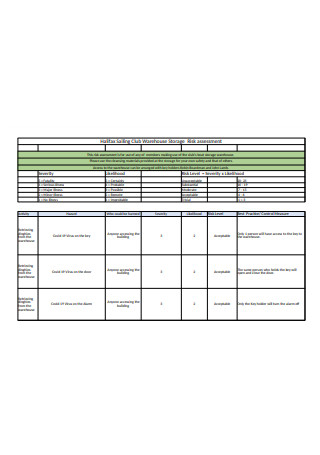
Warehouse Storage Risk Assessment
download now -
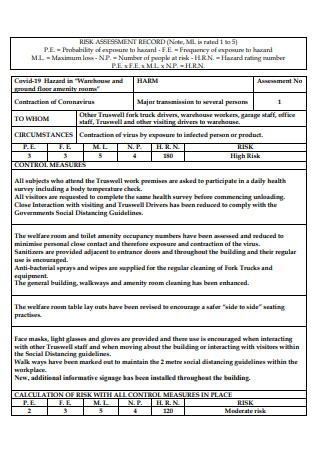
Warehouse Risk Assessment Record
download now -
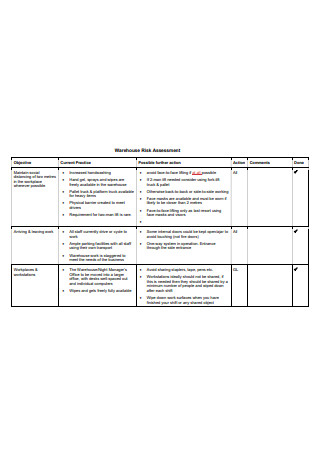
Warehouse Risk Assessment in PDF
download now -
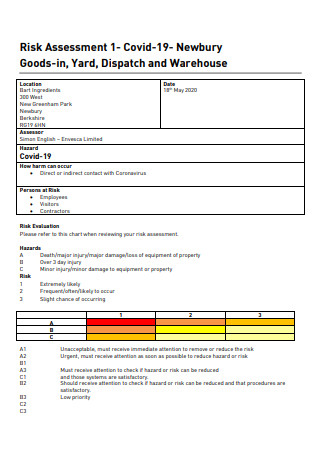
Formal Warehouse Risk Assessment
download now -
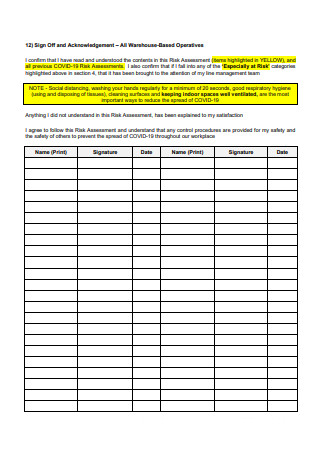
Warehouse Covid-19 Risk Assessment
download now -
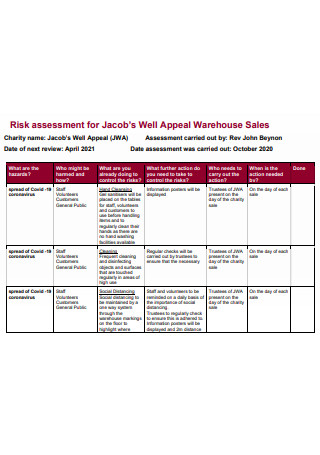
Warehouse Sales Risk Assessment
download now -
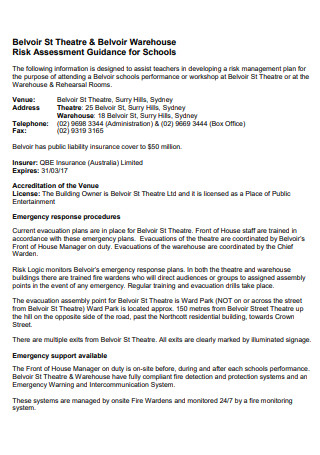
Warehouse Risk Assessment For Schools
download now -
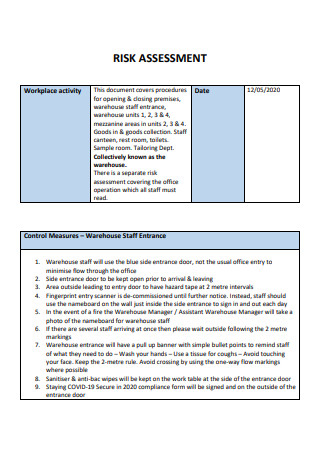
Warehouse Staff Entrance Risk Assessment
download now -
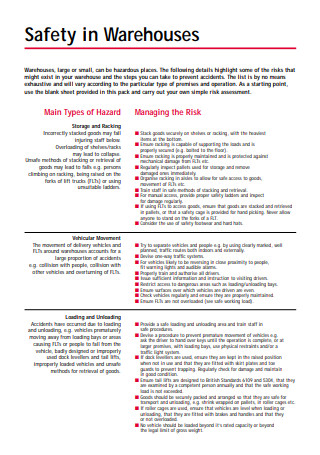
Safety in Warehouse Risk Assessment
download now -
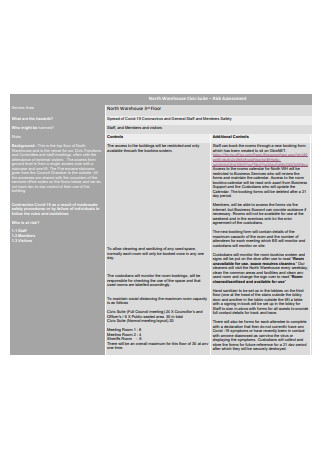
Standard Warehouse Risk Assessment
download now -
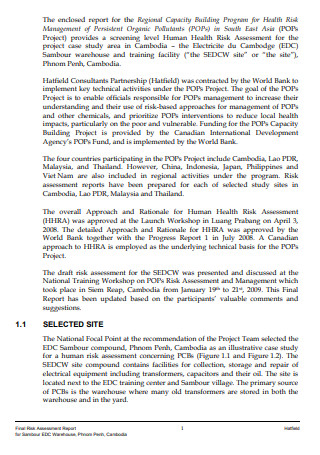
Warehouse Final Risk Assessment Report
download now -
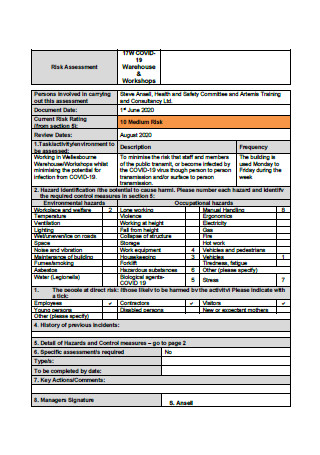
Warehouse and Workshop Risk Assessment
download now -
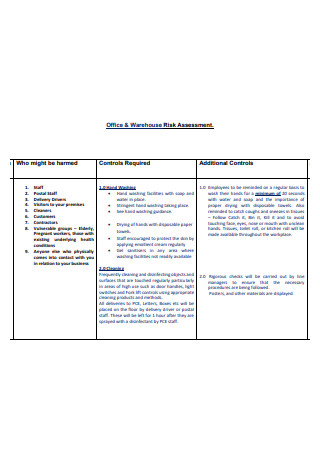
Office and Warehouse Risk Assessment
download now
FREE Warehouse Risk Assessment s to Download
14+ Sample Warehouse Risk Assessment
What Is a Warehouse Risk Assessment?
Benefits of Warehouse Risk Assessment
Types of Risk Assessments
How to Have a Safety Warehouse
FAQs
What is the main goal of risk management?
What happens if there is no risk assessment?
Why do risk assessments fail?
What Is a Warehouse Risk Assessment?
It refers to recognizing workplace safety hazards and implementing preventive measures to control the risks posed by these hazards. Risk assessment assists you in identifying and eliminating threats that may jeopardize the operation of your warehouse and endanger the resources that carry it out. According to statistics, 22% of organizations view their risk management oversight as mature or robust.
Benefits of Warehouse Risk Assessment
Warehouses are vulnerable to various dangers, so warehouse risk management should be taken seriously. It is critical to assess potential hazards and manage them. They frequently target burglary, theft, pilferage, and other unforeseen threats. Due to inefficient warehouse infrastructure, wholesalers and suppliers lose millions of dollars. If you own a storehouse or are in charge of one, you should assess all potential warehouse hazards and problems. Risk managers should be able to decrease exposure to dangers if you hire them effectively. Otherwise, it may have a direct impact on the operation of your firm. This section will discuss the significance of risk management in warehouses.
Types of Risk Assessments
Not every risk assessment is identical. Each type of risk assessment is applicable in different situations. And each will be addressed in this post. Before we examine the various types of risk assessments, it is essential to note that they can be used in junction with one another. It is not always a case of either/or. Some components of each type may be included in a single risk assessment. A health and safety risk assessment evaluates the dangers associated with a task or activity. It considers the likelihood of potential harm. For all types of risk assessment, the evaluator must have experience with the work being evaluated. They must be aware of the dangers present and how to mitigate them. In addition, they should know the risk assessment procedure and identify high risks and the actions that may be required to minimize them. Let’s examine the five types of risk assessments and when you might employ each.
1. Qualitative Risk Assessment
The qualitative risk assessment is the most prevalent risk assessment type. This type of risk assessment is expected in the workplace. This type of risk assessment counts on the personal judgment and expertise of the assessor, who frequently uses their own experience to determine the risk levels involved. The evaluator will consult with others engaged in the activity and best practice guidelines to make decisions. Almost all health and safety risk assessments will begin with a qualitative assessment. The assessor will categorize risk into high, medium, and low levels in a qualitative risk assessment. A qualitative risk assessment will examine the likelihood of someone becoming injured and whether or not it is high, moderate, or low. High risks will require immediate attention as with any other type of risk assessment. Low-level risks can be examined later or may not require further action.
2. Quantitative Risk Assessment
The quantitative risk assessment employs numerical values to quantify risk. Therefore, rather than high, medium, and low, you could have 3, 2, and 1. Or the scale may be considerably larger than 3. This risk assessment is more likely to be used with significant hazards, such as aircraft design, complex chemical plants, or nuclear power plants. Examples of measurable quantities include the presence of chemical and mechanical hazards, modeling techniques, and estimates. Qualitative risk assessments may frequently assign numerical values to various risk levels. Similar to the 3 x 3 and 5 x 5 risk matrices. However, this does not make a qualitative risk assessment quantitative. If the risk assessment continues to rely on the assessor’s discretion in assigning risk values, it remains primarily qualitative. Occasionally, a qualitative risk assessment may become semi-quantitative, such as when some hazards or aspects can be measured and others rely on expert opinion.
3. Generic Risk Assessment
The Management of Health and Safety mandates that employers evaluate the dangers of their work activities. Generic risk assessments cover common hazards to a given task or activity. The purpose of generic risk assessment is to reduce duplication of effort and documentation. This type of risk assessment will evaluate the hazards associated with an action in a single evaluation. And be utilized when the activity may be performed across multiple workplace locations or sites. A generic risk assessment is typically used for similar activities or equipment across multiple sites, departments, and companies. It can act as a template for a risk assessment, covering the types of hazards and risks typically associated with the activity. It is essential to remember that environmental changes can affect risk levels and even introduce new threats, even if the risks associated with a particular action are similar across different sites. It is probably best to utilize generic risk assessments as a starting point for a site-specific risk assessment.
4. Site-Specific Risk Assessment
A risk assessment for a specific workpiece is called a site-specific risk assessment. It considers where the site is, how it looks, and who is doing the work. Your risk assessment for a specific area could be qualitative or quantitative. And you could start with a template for a general risk assessment. But it would help if you ended with a risk assessment specific to the site and fits the dangers there. For example, think about a risk assessment for drilling that isn’t very specific. It would cover things like getting caught in moving parts, being hit by projectiles, touching hot features of the tool, vibration, and noise. But could your site have unusual dangers that could change the level of risk? You might be drilling inside a small area—for example, a vessel or a tank. A risk assessment for a specific site will look at more than just common dangers. It will also talk about the strange.
5. Dynamic Risk Assessment
A dynamic risk assessment is a method of evaluating risk in real-time. This type of risk assessment is frequently utilized to manage unknown risks and uncertainty. Dynamic risk assessments are often used by those who must respond to evolving and changing situations. Dynamic risk assessments may be utilized in instances that include emergency services and healthcare personnel. Because the location, circumstances, and people you interact with will vary from case to case. Therefore, you must continually assess the risk presented by the ever-changing environment. If significant changes occur, is the original risk assessment still applicable? Should you attempt to address the situation? Is it safe to proceed? It is not always likely to prepare for every potential danger or risk. A written risk assessment should evaluate the level of “unknown” risks. Workers must possess the knowledge and abilities to identify and mitigate threats when an element of dynamic risk analysis is required.
How to Have a Safety Warehouse
When opening a warehouse, it can be daunting to get every detail right, and it’s even more challenging to know what to prioritize. When it comes to protecting your employees, we’ll make it simple: before hiring warehouse staff, you must plan and implement warehouse safety procedures throughout the facility. Educate your newly-hired employees on common safety acronyms so they can assess risks and respond to emergencies. To reduce the likelihood of receiving one of OSHA’s most frequent citations, follow OSHA standards for reducing hazards in specific warehouse areas:
1. Forklift Safety
Understanding and educating your employees about forklift safety is crucial. Working at heights should be avoided, particularly for forklift and ladder safety. Apply the same rules to driving a forklift as you would to driving a car, such as obeying speed limits, wearing a seatbelt, and watching your surroundings. As workers freely move throughout the warehouse while operating a forklift, greater caution is required.
2. Loading Dock Safety
An elevated surface can pose more dangers than might be expected. In the loading dock area, potential hazards include products falling on employees, improper use of equipment, and ignorance of the dock’s edge. Consequently, it is essential to develop traffic control plans to prevent collisions. Loading dock edges should be adequately illuminated and marked with visual warnings to aid drivers and employees. Guardrails should also be installed to protect employees further and discourage jumping, poor ergonomics, and horseplay. Another concern is adequate ventilation to prevent the formation of toxic fumes.
3. Conveyor Safety
Because conveyor belts are continuously operating machines, they pose several potential dangers to your employees. Possibilities such as clothing or jewelry becoming entangled, standing and falling off conveyors, and items becoming involved in the belt pose hazardous risks for your employees. Ensure that employees wear required safety uniforms to reduce the risk of clothing becoming entangled, and educate them on the dangers of standing, sitting, and walking on the moving belt. Significantly, if items become entangled in the belt, a lockout system is activated rather than attempting to resolve the issue while the conveyor belt is still running.
4. Material Storage Safety
When working with tall shelving units in a warehouse, it is essential to stack and store materials properly. Consider proper stacking patterns for boxes and pallets to maximize storage space and ensure safety. When the materials are improperly stored, they may fall and injure workers. Having a proper equipment checklist for storage can prevent workplace accidents and extends the equipment’s life. Therefore, you should provide your employees with PPE, such as thick gloves to avoid sharp edges, and safety boots with steel toes to prevent foot injuries. Handles or holders attached to heavier loads make it easier to move the load and prevent pinched fingers; therefore, you should provide your employees with these items.
FAQs
What is the main goal of risk management?
Risk management is identifying, measuring, and treating exposures to loss involving property, liability, income, and personnel. The ultimate objective of risk management is the protection of the organization’s physical and human assets to ensure the continuity of operations.
What happens if there is no risk assessment?
Businesses are responsible for ensuring that all employees know and comprehend the risks associated with work and the working environment. Negligence to do so can result in fines and increase the likelihood of workplace accidents.
Why do risk assessments fail?
The risk assessment is likely to fail without an understanding of acceptable risk levels, as it could continue indefinitely. Every time a new risk is identified, a lengthy process will be added to find a way to reduce or eliminate it, which will continue indefinitely.
As long as you can conduct a risk assessment before purchasing a warehouse, you will be able to locate an excellent starting point. This evaluation enables you to determine whether the desired location is adequate or whether you should look for a better and safer place.
